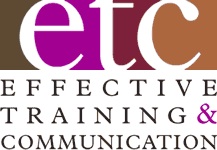Regular readers know that I often write about the importance of Audience Centricity – the single best strategy for getting into the ‘Workplace Presenters’ Hall of Fame’. So, if that’s your goal, the most critical component for creating a Best-in-Class Audience-Centered presentation is … to Start with the End in Mind, as Dr. Stephen Covey teaches us.
You do that by defining specific outcomes for your presentation up front. Then, make sure every element in it supports those outcomes. Most presentations that fail or misfire do so because of poor planning and strategy at this step. And if you spend a lot more time at work writing than presenting, the same strategy works for written communication as well.
As a result of hearing (or reading) your message, what do you want your audience to know that they didn’t know before (information) or to be able to do that they couldn’t do before (training) or to feel or believe what they didn’t feel or believe before (persuasion)? And, what action do you want them to take as a result?
The more precisely you define these outcomes, the easier it will be to develop your message accordingly … and to know if you succeeded. And make sure you create ‘SMART’ Outcomes. Are they Specific, Measurable, Achievable, Realistic and Time bound? The more effort you expend at this stage, the better your results will be.
A simple strategy for defining outcomes is to determine what specific communication or information problem you’re trying to solve. But, don’t think serious problem here. The simple absence of important information is a problem. If you’re changing the company’s security procedures and employees don’t know the new one yet, the absence of that important information is a problem. You then create a presentation so they will know the new procedures and, therefore, you solve that information problem. And you remembered to stress how the information will benefit the audience and answer their question, ‘What’s in it for me?’
Finally, evaluate those outcomes in light of the specific Information Continuum involved. What information does the audience already have about the problem before you present your message and how will that influence what you say? What other information will you share with them after the presentation and how will that influence you?
So, to create a Best-in-Class Audience-Centric presentation, start with a precise definition of intended outcomes. Answer the critical questions as you create ‘SMART’ presentation objectives and evaluate them in the context of the Information Continuum. And, never forget that failing to plan is planning to fail. Now, go present with more Power and Success.

